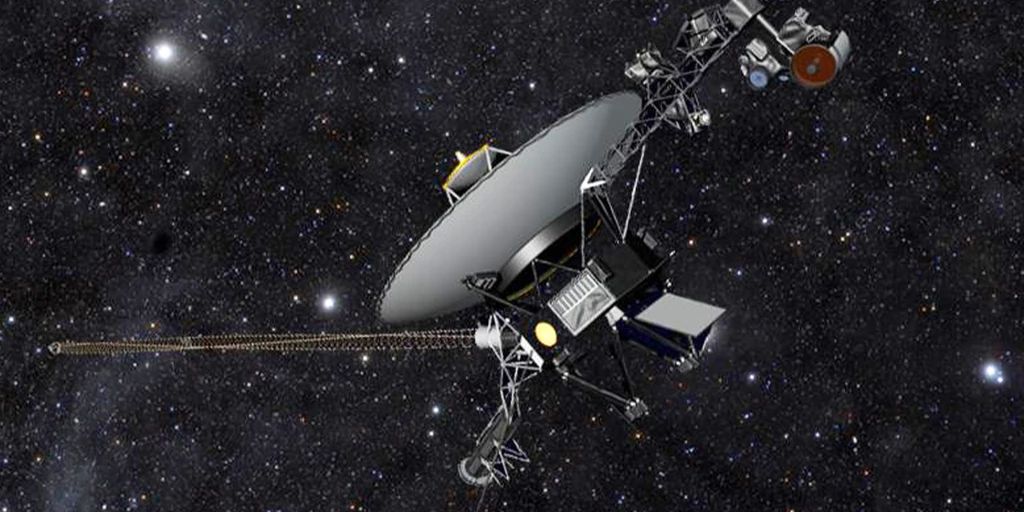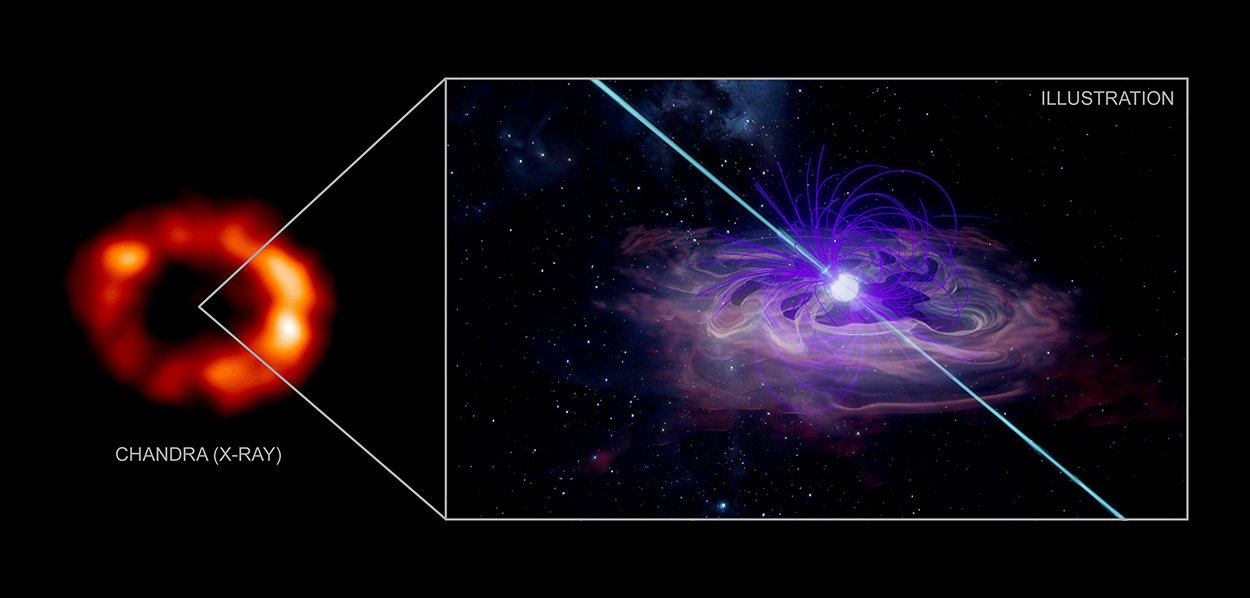On February 24, 1987, a star exploded in a bright supernova in our neighboring galaxy, the Large Magellanic Cloud. Since then, astronomers have been searching for the rest of the star’s core that should have been left behind. Now they can find this neutron star. Because many telescopes, including NASA’s Chandra X-ray Telescope, have detected high-energy radiation signals in the supernova remnant. Their pattern indicates that a fast-spinning neutron star – a small pulsar – is hidden in the dusty center of the supernova remnant.
When a massive star reaches the end of its life cycle, the radiation pressure from its nuclear fusion is no longer sufficient to counteract the massive gravitational pull of the matter. As a result, the core collapses and the star explodes into a supernova. The star’s outer shells are ejected away into space, while either a highly compressed remnant of the core, a neutron star, or a black hole. When a star 168,000 light-years away exploded in the Large Magellanic Cloud on February 24, 1987, it was the first supernova that could be seen in the night sky with the naked eye. Accordingly, astronomers have extensively studied this 1987A supernova and its remnants since then.
Where did the star stay?
But of all things, this supernova remnant center is covered in clouds of dust and gas, so it was not yet possible to locate the remnants of the star’s core. “For 34 years, astronomers have been searching the stellar debris for the neutron star we expect there,” explains first author Emanuele Greco of the University of Palermo. “There was also a lot of evidence that later turned out to be dead ends. But our latest results are different.” Several new observations confirm the assumption that a fast-spinning neutron star – a pulsar – is hidden in the core of the 1987A supernova. Early in 2020, Astronomers have detected a remarkably hot spot in the center of the dust cloud with the help of the Atacama Large Millimeter / Sub Array (ALMA). It has a temperature of several million degrees and its features and location match that of a hot young neutron star.
Greco and his team have now detected X-rays in the supernova remnant that come from its center and also match well with the projected emissions of a young neutron star. Your data comes from images of NASA’s Chandra X-ray Telescopes and Nostar (Nuclear Spectroscopy Telescope Array) made from supernova remnants between 2012 and 2014. Changes in radiation during this time allowed researchers to compare this to two potential sources of this radiation using an astrophysical model. X-rays can originate in the remnants of a supernova from a neutron star, but they can also originate from the shock wave of the explosion that collides with gas and star debris.
Telltale X-ray
As astronomers discovered, X-rays consist of two components, a low-energy portion of “soft” X-ray radiation and a higher energy fraction. According to the models, these two parts must have different origins. “We found that soft X-rays ranging from 0.5 to 8 kiloelectronvolts originate from thermal radiation from the shock star’s material,” according to a report by Greco and his team. “But we also found strong fractions of more than ten kiloelectronvolts of energy in all of Nostar’s spectra. This clearly shows that there must be another component.” The features of this more energetic component match the radiation one would expect from a young rapidly spinning neutron star. In addition, it would take 400 years for the electrons to accelerate from the shock wave to such high velocities that the X-rays emit this energy, as the researchers explained .. Since the supernova was only 34 years ago, this was ruled out.
Astronomers believe that behind the debris from the 1987A supernova remnant is likely a small pulsar emitting powerful streams of particles and rays, the so-called stellar wind nebulae. Maybe you (?) The builder of the hotspot ALMA has already found in the middle of the cloud. It can be clarified whether a pulsar actually formed during the star’s explosion in the next ten years or so. Because astronomers expect that the central dust cloud of the supernova remnant will slowly spread and melt by then. “This could provide us with a once in a lifetime opportunity to study pulsar evolution,” says co-author Salvatore Orlando of the Astronomical Observatory.
These are: Emanuele Greco (Universität Palermo) et al. , The Astrophysical Journal

“Alcohol buff. Troublemaker. Introvert. Student. Social media lover. Web ninja. Bacon fan. Reader.”





More Stories
Principles and features of the folk nutritional principle
Science: The percentage of women in mint topics rises to a third
Newly appointed Science, Research and Innovation Council